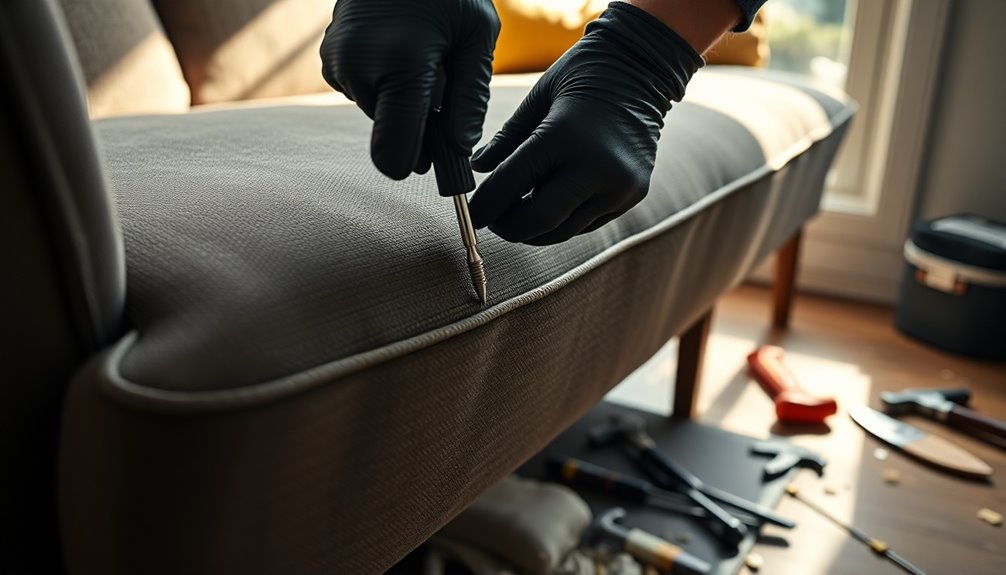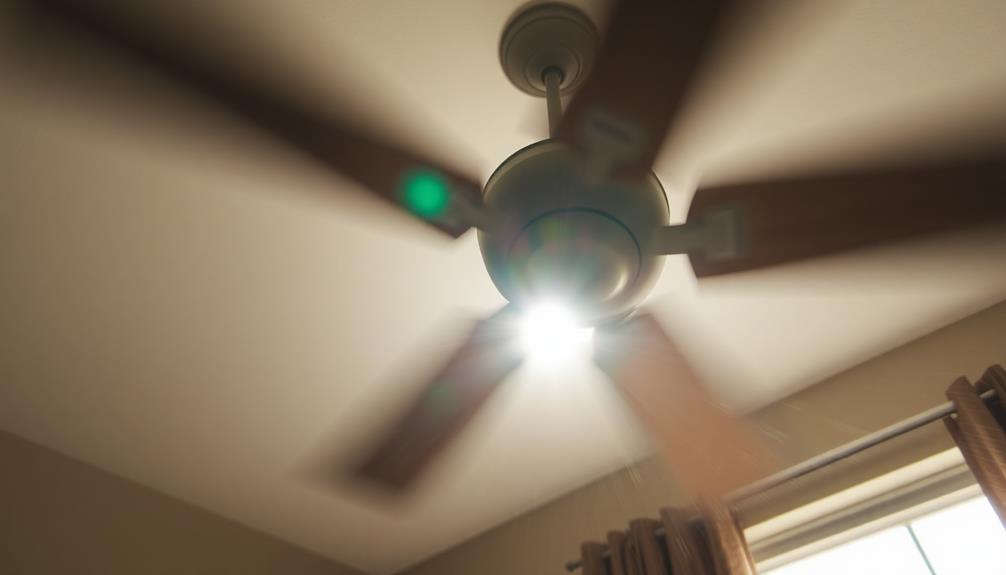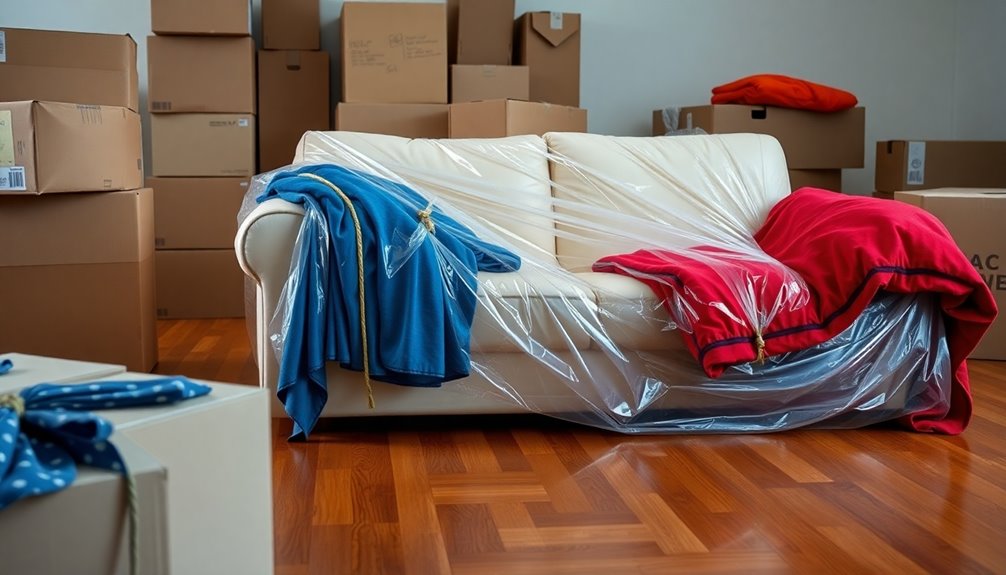To dismantle a sofa for disposal, start by removing cushions and covers. Use basic tools like a screwdriver and wrench to unscrew any legs. Check for bolts and screws holding the frame together; carefully remove them. If the sofa has upholstery staples, a staple remover can help. Be cautious to avoid damaging the frame. Once dismantled, separate materials like wood and fabric for more eco-friendly disposal. Make sure you've got a plan for hauling away each part. If you want tips on making the process even easier, there's plenty more to explore ahead.
Key Takeaways
- Remove cushions and any detachable parts to lighten the sofa before dismantling.
- Use appropriate tools, like wrenches and screwdrivers, to loosen and remove legs and frame components.
- Carefully inspect upholstery stitching to avoid damaging the fabric during disassembly.
- Keep coasters handy to protect floors while moving the sofa pieces.
- Organize and label parts as you dismantle to simplify reassembly if needed.
Introduction
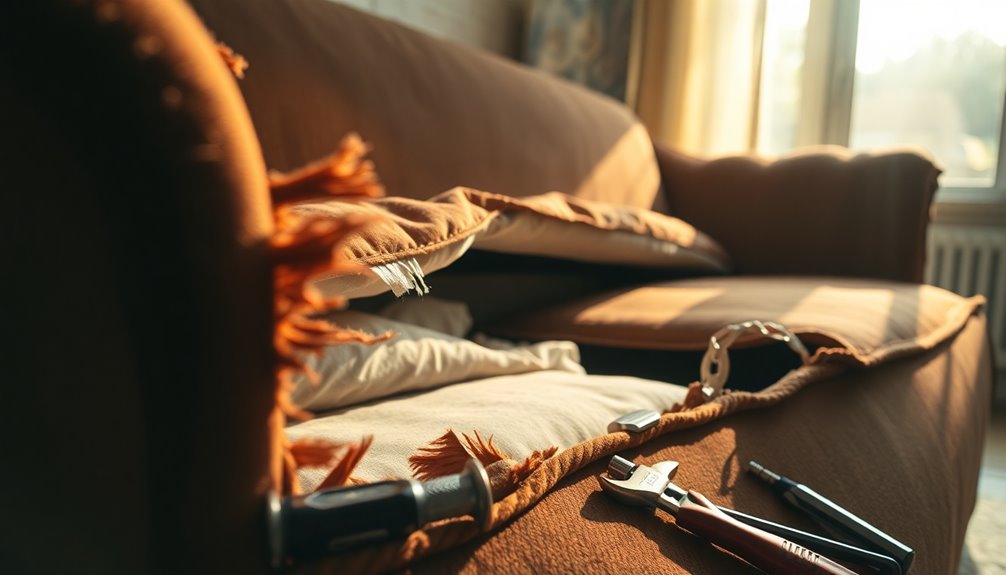
When it comes to keeping your sofa in top shape, routine vacuuming and dusting are key. You'll want to use fabric-specific cleaning techniques to tackle stains and maintain its appearance. And if you ever spill wine, knowing how to treat it effectively can save your sofa from permanent damage.
Routine Vacuuming and Dusting
To keep your sofa looking its best and to promote a healthier living environment, routine vacuuming and dusting are essential. Vacuuming your upholstery at least once a week helps remove dust, debris, and allergens, improving indoor air quality. This is especially important in homes with pets or children, where messes can accumulate quickly. Utilize a vacuum attachment designed for upholstery to effectively reach crevices and seams, ensuring a thorough clean.
After vacuuming, follow up with gentle dusting using a microfiber cloth. This technique captures any remaining dust particles without scratching or damaging the surface of your sofa. Regular dusting prevents dirt and grime from building up, which can lead to discoloration and deterioration over time. Additionally, consider designating pet-free zones to further minimize the spread of pet hair and allergens in your living space.
Fabric-Specific Cleaning Techniques
Maintaining your sofa's appearance and longevity requires understanding the specific cleaning techniques for different fabric types. When you're taking apart a couch, it's crucial to know how to properly care for the upholstery. Each fabric, like leather, microfiber, or cotton, has its own cleaning method. For instance, leather needs a damp cloth and a leather conditioner, while microfiber benefits from a vinegar and water mixture.
Before you start, always check the cleaning code tag on your sofa. This tag will guide you on which cleaners are suitable; common codes include "W" for water-based, "S" for solvent, and "WS" for both. If your upholstery is fastened with staples or tacks, carefully remove the upholstery to access the underlying structure.
When it comes to stain removal, act fast. Blot the stain instead of rubbing to prevent it from spreading, and use a cleaner that matches the fabric. Regular vacuuming helps keep dirt at bay, so use an upholstery attachment for those hard-to-reach spots. If you're deep cleaning, consider a steam cleaner designed for upholstery, ensuring it's safe for your specific fabric to avoid damage while allowing you to potentially reuse the fabric later.
Treating Wine Spills Effectively
Cleaning upholstery isn't just about routine maintenance; it also involves tackling unexpected spills, like wine. As soon as you notice a spill, act fast. Blot the wine immediately with a clean cloth or paper towel, starting from the outer edges and working inward to prevent spreading the stain. If you've got old furniture, you might want to remove the cushions to get better access to the stained area.
Next, sprinkle salt or baking soda on the spill to absorb the wine and let it sit for several minutes before vacuuming it up. For tougher stains, mix one part white vinegar with two parts water in a spray bottle. Apply this solution to the stain, then blot it until the wine is gone.
If the stain persists, create a paste of hydrogen peroxide and dish soap, applying it to the affected area for about 30 minutes before rinsing. Always remember to test any cleaning solution on a hidden area of the fabric first, especially if you plan on removing the legs or working on the frame of the couch. This helps prevent unwanted discoloration or damage. Additionally, maintaining optimal performance of your upholstery can help in prolonging its life and resisting stains.
Sofa Care With Fabric Spray
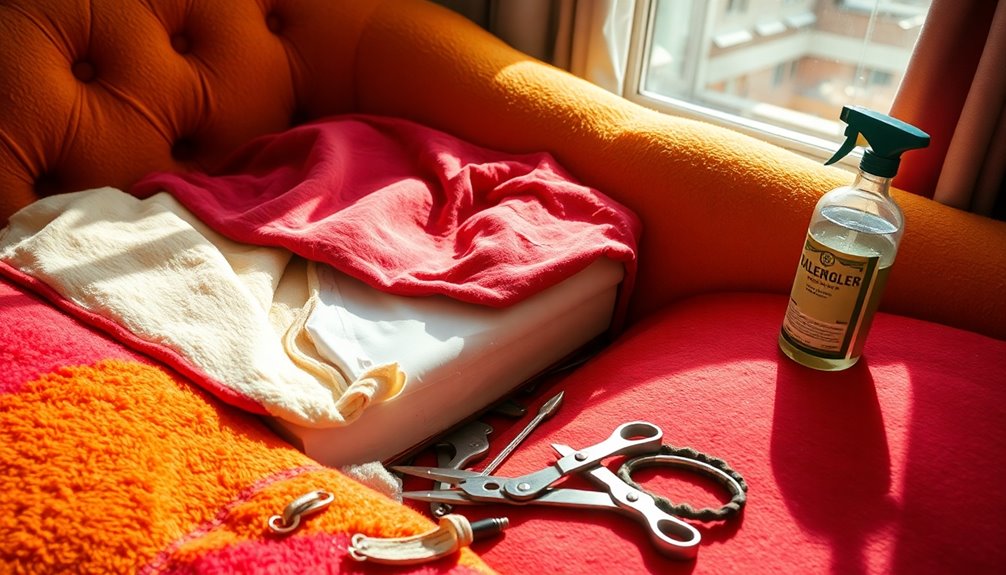
Taking care of your sofa starts with selecting the right fabric options and using fabric spray. By choosing durable, washable materials and applying fabric spray regularly, you can protect your investment from scratches and stains. Don't forget to place furniture coasters under legs to further safeguard your sofa's appearance and longevity. Additionally, consider using energy-efficient options to reduce the environmental impact of your cleaning products.
Scratch-Resistant Fabric Options
When it comes to choosing the right fabric for your sofa, opting for scratch-resistant options can make a significant difference in durability and upkeep. Scratch-resistant fabrics, like microfiber and certain synthetic blends, are designed to withstand damage from pet claws and sharp objects, ensuring your upholstery stays looking good for longer.
To enhance the protective qualities of these fabrics, consider applying a fabric spray specifically formulated for scratch resistance. This creates a barrier that helps maintain the integrity of your upholstery and prolongs its life. High-performance fabrics treated with nanotechnology not only resist scratches but also repel liquids and stains, making maintenance a breeze.
When selecting scratch-resistant fabrics, look for those with a Martindale abrasion rating of at least 30,000. This rating indicates strong wear resistance, ensuring your sofa can handle daily use without showing signs of wear. Regularly using fabric sprays with protective qualities will reduce the need for frequent cleaning or replacement, allowing you to enjoy your durable, stylish sofa for years to come. Prioritizing these options can save you time and money in the long run.
Choose Durable, Washable Fabrics
Choosing durable, washable fabrics for your sofa not only enhances its longevity but also makes maintenance a breeze. When selecting upholstery, opt for durable materials like polyester or microfiber. These fabrics are renowned for their stain resistance and ability to withstand everyday wear and tear.
Washable fabrics can significantly simplify your cleaning routine; look for upholstery that can be easily removed and tossed into the washing machine. This ensures your sofa stays fresh and clean without much effort. Additionally, consider choosing darker colors or patterns, which can help disguise stains and maintain a cleaner appearance over time.
Regularly applying fabric sprays can further enhance the stain resistance of your sofa. These treatments add an extra layer of protection against spills and dirt, prolonging the life of your upholstery. By protecting the fibers from moisture and UV damage, you're reducing the need for deep cleaning or costly replacements. Furthermore, investing in energy-efficient designs can help create a more sustainable home environment.
Investing in durable, washable fabrics not only saves you time but also ensures your sofa remains a stylish and functional part of your home for years to come.
Using Furniture Coasters
Using furniture coasters can make dismantling your sofa a much smoother process. These handy tools distribute weight evenly, which helps prevent damage to the legs of your sofa during removal. By minimizing pressure on the flooring, coasters also reduce the risk of scratches, keeping your home intact while you prepare for disposal.
Before you start taking apart your sofa, consider applying fabric spray to the upholstered surfaces. This not only cleans and refreshes the fabric but also makes it easier to handle, preserving its condition for potential reuse or donation. Regular use of fabric spray can repel dirt and stains, extending the life of your cushions.
When you begin moving the disassembled parts of the sofa, furniture coasters will allow for smoother gliding across the floor. This can greatly reduce the risk of injury or damage, making the process safer for you and your surroundings. Plus, utilizing coasters helps maintain the integrity of your sofa's structure, making reassembly easier if you choose to keep it. Overall, coasters and fabric spray are essential tools for a successful sofa dismantling experience.
Upholstery Stitching Reinforcement
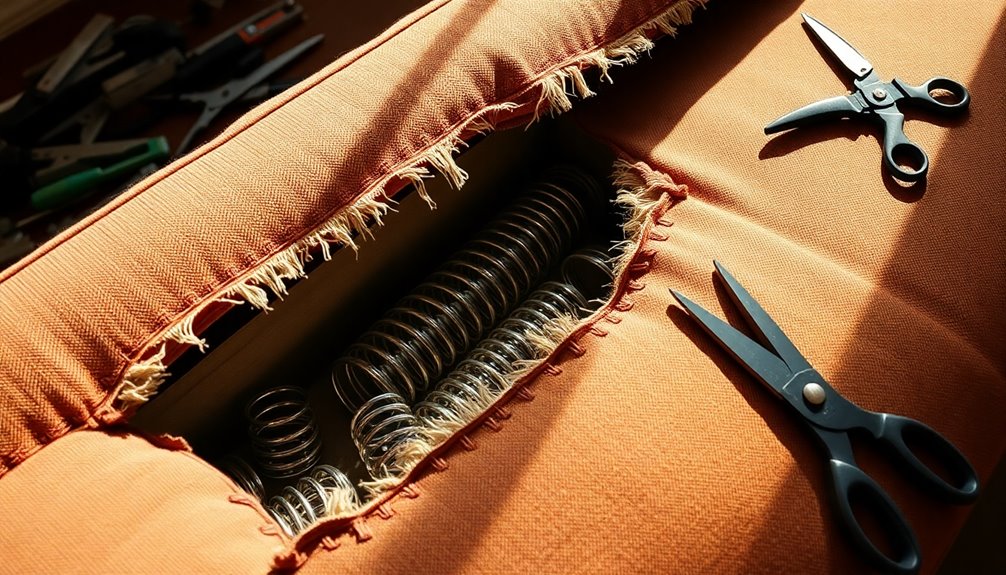
When you're assessing your sofa, don't overlook the importance of upholstery stitching reinforcement. This not only impacts frame stability but can also guide your decision on reupholstering for a fresh look, enhancing your sofa's appeal. Keeping an eye on stitching can help you catch wear before it leads to more significant issues.
Frame Stability Concerns
While dismantling a sofa, you can't overlook the importance of upholstery stitching reinforcement, as it plays a vital role in maintaining the frame's stability. The way your sofa is stitched can significantly impact both the disassembly process and the integrity of the frame. High-stress areas often feature double-stitched seams, providing essential support but complicating the removal of upholstery.
When you're cutting through reinforced stitching, do so carefully to avoid tearing the fabric, which could hinder your reuse or recycling efforts. Zigzag stitching, for example, is generally more flexible, making it easier to detach compared to straight stitches. By handling the upholstery delicately, especially in reinforced zones, you can preserve the frame's integrity and avoid unnecessary damage.
Reupholstering for a Fresh Look
How can you give your old sofa a fresh look while ensuring it lasts for years? When reupholstering, focus on reinforcing upholstery stitching to boost durability. Start by choosing a heavy-duty thread like polyester or nylon; it can withstand wear and tear far better than regular cotton thread. Using a sewing machine with a walking foot attachment helps evenly feed multiple layers of fabric and batting, making your stitching more consistent.
Double-stitching seams in high-stress areas, like corners and edges, is crucial. This technique significantly enhances the upholstery's longevity and prevents tearing down the line. Additionally, consider using strong adhesive or fabric glue in areas under high tension, such as the seat cushions and backrest. This extra layer of support will help your newly upholstered sofa stand the test of time.
Finally, don't forget to regularly inspect and maintain the stitched areas after reupholstering. Keeping an eye on potential issues can prevent minor problems from turning into major repairs, ultimately extending the life of your new upholstery. With these steps, you can enjoy a sofa that looks great and holds up for years to come.
Revitalizing Your Sofa's Appeal
Revitalizing your sofa's appeal starts with the crucial step of reinforcing upholstery stitching. This process can significantly extend your sofa's lifespan by preventing fabric fraying and maintaining its structural integrity. Begin by removing upholstery to access the seams that need attention. For effective reinforcing stitching, consider using a sewing machine with heavy-duty thread or opt for hand-stitching with upholstery needles for durability.
In high-traffic areas, double-stitching seams or applying a zigzag stitch pattern helps distribute stress evenly, improving resilience against wear and tear. Regularly inspect for loose or damaged stitching; tackling minor repairs is much cheaper than full reupholstering.
Using upholstery-grade fabric during the reupholstering process enhances your sofa's durability, given its higher thread count. This makes your sofa, even a sofa bed, more resistant to daily use and wear. By taking these steps, you not only reinforce the stitching but also ensure that your sofa remains a stylish and functional centerpiece in your living space. Remember, a little maintenance goes a long way in keeping your sofa looking fresh and inviting. Additionally, incorporating Indonesian decor masks can further enhance your living space's cultural aesthetic.
Personalized Upholstery Choices
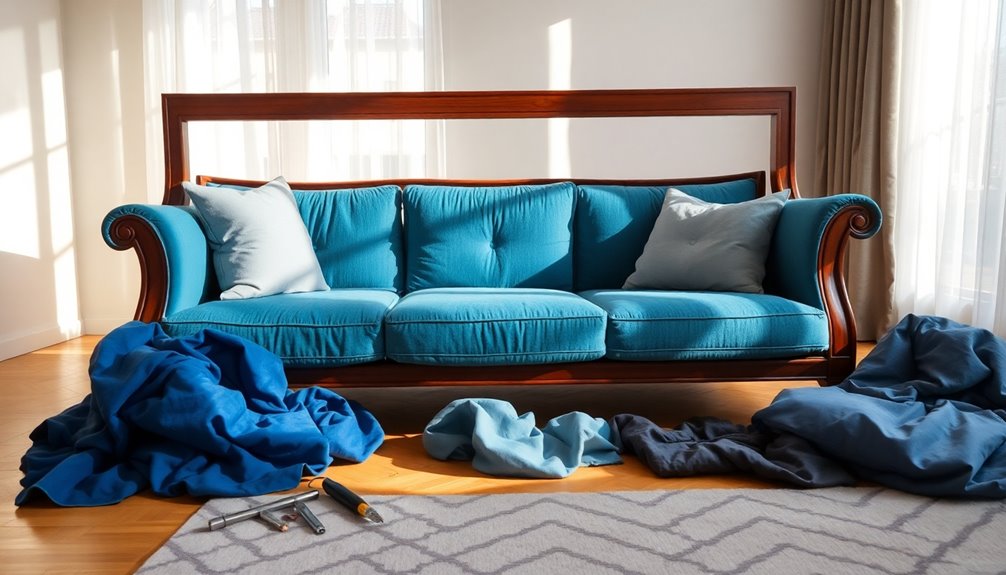
Choosing the right upholstery for your sofa can transform your living space, making it feel more inviting and personalized. When you select upholstery, consider fabrics that not only match your interior decor but also reflect your personal style. Options like leather, microfiber, or cotton offer a variety of durability and maintenance levels, so think about your lifestyle needs as you make your choice.
Custom upholstery allows you to choose from an array of colors, patterns, and textures, giving you the perfect opportunity to express your unique personality. Quality upholstery not only enhances the visual appeal of your sofa but also affects its longevity; higher-quality fabrics typically resist wear and tear better over time.
If you're environmentally conscious, many manufacturers now provide eco-friendly upholstery options, such as organic or recycled materials. This allows you to make sustainable choices while still achieving a personalized look for your furniture. Remember, your upholstery choice can significantly impact your sofa's aesthetics and comfort, making it a crucial factor in your furniture disposal process when the time comes.
Emergency Repair Techniques
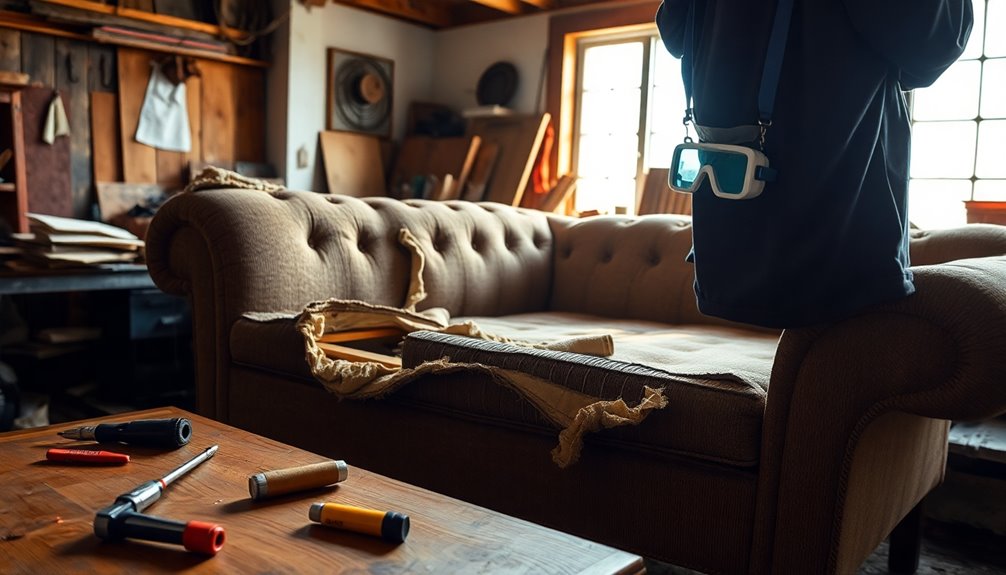
When unexpected damage occurs to your sofa, quick emergency repair techniques can save the day. If you notice small tears in the upholstery, using fabric glue or a patch kit can provide a temporary repair. This helps keep the mess minimal as you prepare to disassemble the sofa.
In case a leg is loose, grab a wrench to temporarily tighten it. This prevents the sofa from wobbling and keeps it stable while you work. For sagging areas, placing cushions underneath can offer temporary support and comfort until you're ready to remove them for dismantling.
If you encounter loose frame sections, clamps can be used to stabilize them, which helps prevent further damage during the disassembly process. In more severe situations, like when a section breaks unexpectedly, duct tape becomes your best friend. Use it to hold broken parts together until you can safely disassemble the sofa.
Conclusion
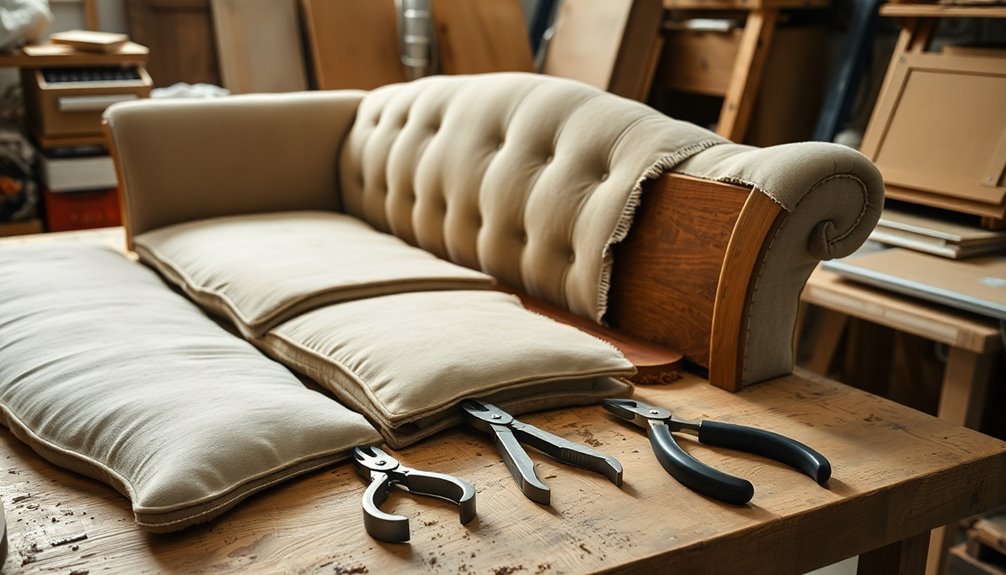
Dismantling a sofa may seem daunting, but with the right approach and tools, you can tackle it efficiently. Start by gathering essential tools like screwdrivers, Allen wrenches, and staple pullers. Systematically remove cushions, upholstery, and frame components to streamline the couch removal process. This method not only simplifies disposal but also opens up opportunities for recycling or donating usable furniture items.
Before you dispose of your sofa, take the time to research local regulations regarding furniture disposal. Adhering to these guidelines helps you avoid fines and ensures proper waste removal practices. Planning ahead is crucial; consider renting a dumpster or contacting junk removal services to make the process smoother.
Frequently Asked Questions
How to Break Down a Couch for Disposal?
To break down a couch for disposal, start by removing cushions and any detachable parts like legs or armrests. Use a box cutter to strip the upholstery, but be careful of sharp edges—gloves are a must! Then, unscrew the backrest and arms, keeping track of all fasteners. Disassemble the frame piece by piece, using a saw if needed. Finally, organize the parts and fasteners in labeled bags for easy disposal.
How to Break up an Old Sofa?
To break up an old sofa, start by removing all loose cushions and pillows to lighten it. Use a box cutter to strip away the upholstery, cutting carefully. Next, detach the legs with a screwdriver or saw if needed. Systematically remove any attached components like armrests and backrests by unscrewing them. Finally, sort the materials for recycling or disposal, ensuring you follow your local waste management guidelines for proper handling.
Can Sofas Be Disassembled?
Yes, you can disassemble most sofas, making it easier to transport them, especially in tight spaces. Many sofas have removable legs, detachable cushions, and separable frame sections. You'll likely need some tools like screwdrivers and Allen wrenches to help with the process. Just keep in mind that some models, like sofa beds or recliners, might have additional complexities, so handle those parts carefully to avoid damage during disassembly.
How to Get Rid of an Old Sofa?
When you’re looking to get rid of an old sofa, consider donating it to local charities if it’s still usable. If it’s not in good shape, check for recycling programs in your area that handle upholstered furniture. You can also schedule a bulk waste pickup or hire a junk removal service for easy disposal. If needed, disassemble the sofa into smaller parts for regular trash collection while separating recyclables. Additionally, consider reaching out to your local community groups or social media platforms where people often seek secondhand furniture. This can be a great way to find someone who might appreciate and use your old sofa. Ultimately, taking the time to explore these options can ensure you responsibly dispose of your old sofa, allowing it to find a new life rather than ending up in a landfill.
